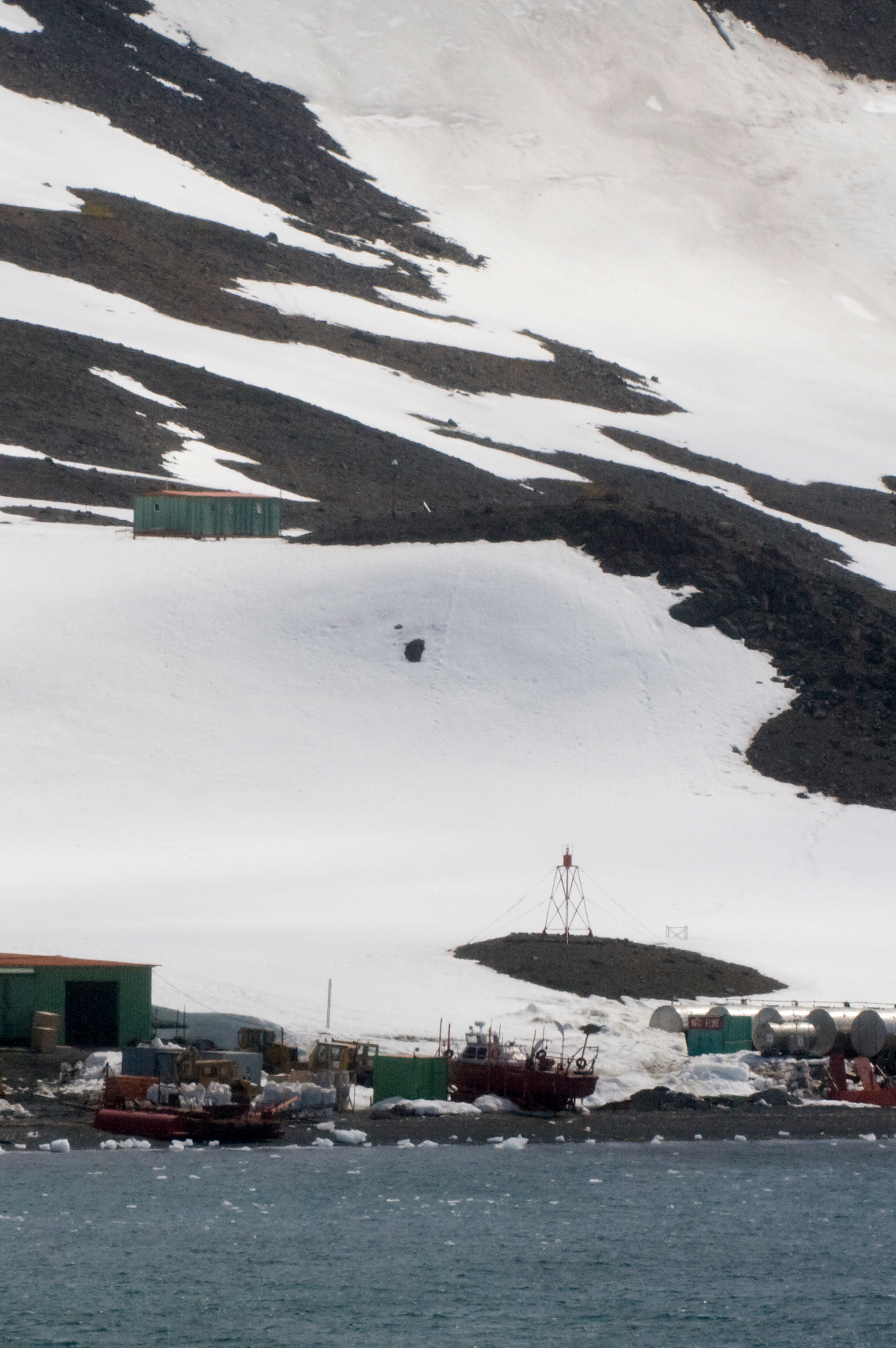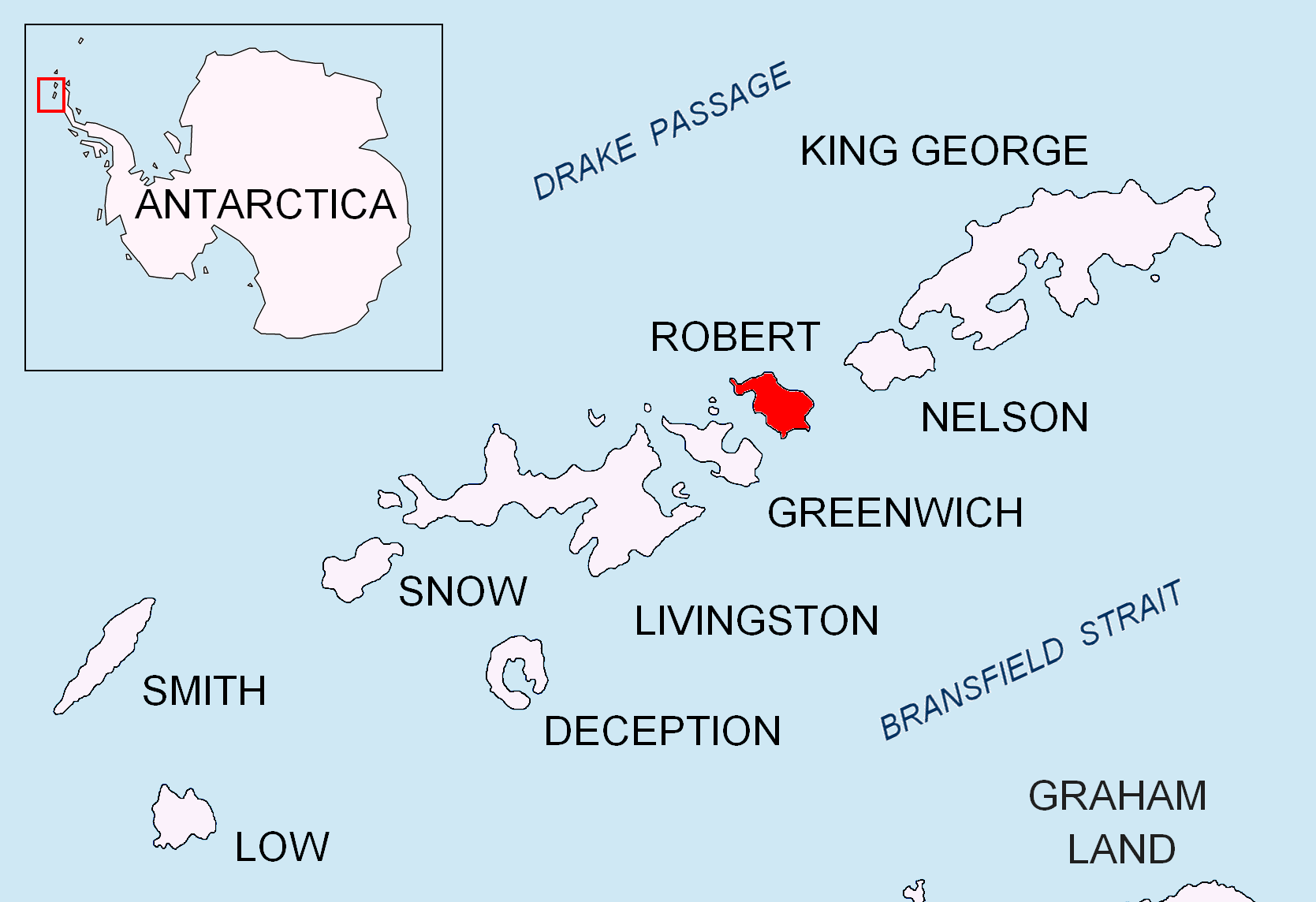|
Fort William (Robert Island)
Fort William Point is the conspicuous flat-topped rocky headland forming the northwest extremity of Coppermine Peninsula and Robert Island in the South Shetland Islands, Antarctica. The point is a northwest entrance point of English Strait and forms the west side of the entrance to Carlota Cove. The feature was named by the early 19th century sealers who used it as a landmark for entering English Strait from the north. Location The point is located at which is southwest of Catharina Point, north of Spark Point, north-northeast of Barrientos Island, east of Okol Rocks and southeast of Table Island (British mapping in 1821, 1962 and 1968, Argentine in 1949, Soviet Union in 1961, Chilean in 1974, and Bulgarian in 2009). See also * List of lighthouses in Antarctica * Composite Antarctic Gazetteer * Robert Island * SCAR * South Shetland Islands * Territorial claims in Antarctica Seven sovereign states – Argentina, Australia, Chile, France, New Zealand, Norway, and the U ... [...More Info...] [...Related Items...] OR: [Wikipedia] [Google] [Baidu] |
English Strait
English Strait is the 10.5-mile (17-km) long and 1.2-mile (2-km) wide strait lying between Greenwich Island and Robert Island in the South Shetland Islands, Antarctica. Trending southeast-northwest, and entered between Santa Cruz Point and Edwards Point in the south, and Fort William Point and Okol Rocks, Aitcho Islands in the north. The name dates back to 1822 and is established in international usage. Location English Strait is located at . British mapping in 1821, 1822 and 1968, Chilean in 1971, Argentine in 1980, and Bulgarian in 2009. Map L.L. Ivanov. Antarctica: Livingston Island and Greenwich, Robert, Snow and Smith Islands. Scale 1:120000 topographic map. Troyan: Manfred Wörner Foundation, 2010. (First edition 2009. ) References English Strait.SCAR Composite Gazetteer of Antarctica The Composite Gazetteer of Antarctica (CGA) of the Scientific Committee on Antarctic Research (SCAR) is the authoritative international gazetteer containing all Antarctic toponyms ... [...More Info...] [...Related Items...] OR: [Wikipedia] [Google] [Baidu] |
Barrientos Island
Barrientos Island is a small, ice-free island in the Aitcho group on the west side of English Strait in the South Shetland Islands, Antarctica. Extending , surface area .L.L. Ivanov. Antarctica: Livingston Island and Greenwich, Robert, Snow and Smith Islands. Scale 1:120000 topographic map. Troyan: Manfred Wörner Foundation, 2010. (First edition 2009. ) The area was visited by early 19th century sealers. Barrientos Island is a popular tourist site frequented by Antarctic cruise ships. The feature was named by the Chilean Antarctic Expedition in 1949. Location The midpoint is located at and the island is lying northwest of Cecilia Island, north-northwest of Spark Point, Greenwich Island, northeast of Dee Island, east of Sierra Island, southeast of Pasarel Island, south-southeast of Bilyana Island and south-southwest of Fort William, Robert Island (British mapping in 1968, Chilean in 1971, Argentine in 1980, and Bulgarian in 2005 and 2009). See also * Aitcho Island ... [...More Info...] [...Related Items...] OR: [Wikipedia] [Google] [Baidu] |
Territorial Claims In Antarctica
Seven sovereign states – Argentina, Australia, Chile, France, New Zealand, Norway, and the United Kingdom – have made eight territorial claims in Antarctica. These countries have tended to place their Antarctic scientific observation and study facilities within their respective claimed territories; however, a number of such facilities are located outside of the area claimed by their respective countries of operation, and countries without claims such as China, India, Italy, Pakistan, Russia, South Africa ( SANAE), Ukraine, and the United States have constructed research facilities within the areas claimed by other countries. There are overlaps among the territories claimed by Argentina, Chile, and the United Kingdom. History Spanish claims According to Argentina and Chile, the Spanish Crown had claims on Antarctica. The ''capitulación'' (governorship) granted to the conquistador Pedro Sánchez de la Hoz in 1539 by the King of Spain, Charles V, explicitly included al ... [...More Info...] [...Related Items...] OR: [Wikipedia] [Google] [Baidu] |
Scientific Committee On Antarctic Research
The Scientific Committee on Antarctic Research (SCAR) is an interdisciplinary body of the International Science Council (ISC). SCAR coordinates international scientific research efforts in Antarctica, including the Southern Ocean. SCAR's scientific work is administered through several discipline-themed ''science groups''. The organisation has observer status at, and provides independent advice to Antarctic Treaty Consultative Meetings, and also provides information to other international bodies such as the Intergovernmental Panel on Climate Change (IPCC) and the United Nations Framework Convention on Climate Change (UNFCCC). History At the International Council of Scientific Unions (ICSU)’s Antarctic meeting held in Stockholm from 9–11 September 1957, it was agreed that a committee should be created to oversee scientific research in Antarctica. At the time there were 12 nations actively conducting Antarctic research and they were each invited to nominate one delegate to ... [...More Info...] [...Related Items...] OR: [Wikipedia] [Google] [Baidu] |
Composite Antarctic Gazetteer
The Composite Gazetteer of Antarctica (CGA) of the Scientific Committee on Antarctic Research (SCAR) is the authoritative international gazetteer containing all Antarctic toponyms published in national gazetteers, plus basic information about those names and the relevant geographical features. The Gazetteer includes also parts of the International Hydrographic Organization (IHO) General Bathymetric Chart of the Oceans (GEBCO) gazetteer for under-sea features situated south of 60° south latitude. , the overall content of the CGA amounts to 37,893 geographic names for 19,803 features including some 500 features with two or more entirely different names, contributed by the following sources: {, class="wikitable sortable" ! Country ! Names , - , United States , 13,192 , - , United Kingdom , 5,040 , - , Russia , 4,808 , - , New Zealand , 2,597 , - , Australia , 2,551 , - , Argentina , 2,545 , - , Chile , 1,866 , - , Norway , 1,706 , - , Bulgaria , 1,450 , - , G ... [...More Info...] [...Related Items...] OR: [Wikipedia] [Google] [Baidu] |
List Of Lighthouses In Antarctica
This is a list of lighthouses in Antarctica. Lighthouses See also * Lists of lighthouses and lightvessels References External links * {{Lighthouses Antarctica Lighthouses A lighthouse is a tower, building, or other type of physical structure designed to emit light from a system of lamps and lenses and to serve as a beacon for navigational aid, for maritime pilots at sea or on inland waterways. Lighthouses mark ... ... [...More Info...] [...Related Items...] OR: [Wikipedia] [Google] [Baidu] |
Table Island (South Shetland Islands)
Table Island is a conspicuous flat-topped, rocky island lying north of Greenwich Island and north-northwest of the Aitcho group on the west side of English Strait in the South Shetland Islands, Antarctica. The island is rising to over and extending , with a surface area of .L.L. IvanovAntarctica: Livingston Island and Greenwich, Robert, Snow and Smith Islands.Scale 1:120000 topographic map. Troyan: Manfred Wörner Foundation, 2009. It is separated from Aitcho Islands to the south-southeast by the wide Klimash Passage. ''Turmoil Rock'' () is lying southeast of Table Island and north-northeast of Morris Rock. The area was visited by early-19th-century sealers. The island was descriptively named by sealers from its shape, while the rock was descriptively named from the breakers it creates, following a survey from ''HMS Protector'' in 1967. Location The midpoint of Table Island is located at and the island lies northwest of Fort William, Robert Island, north of Dee ... [...More Info...] [...Related Items...] OR: [Wikipedia] [Google] [Baidu] |
Okol Rocks
Okol Rocks ( bg, скали Окол, ‘Skali Okol’ ska-'li o-'kol) is a group of rocks in the north of Aitcho Islands group on the west side of English Strait in the South Shetland Islands, Antarctica. The principal feature in the group is ''Lambert Island'' (). ''Passage Rock'' () is lying east of Okol Rocks and west by south of Fort William, Robert Island, with ''Cheshire Rock'' () lying south by east of Passage Rock, southwest of Fort William, northeast of Jorge Island and east-southeast of Okol Rocks. SCAR . The area was visited by early 19th century |
Spark Point
Spark Point, also ''Canto Point'', is a rocky point forming the northwest side of the entrance to both Discovery Bay and Galápagos Cove, and the east side of the entrance to Jambelí Cove in the northeast of Greenwich Island in the South Shetland Islands, Antarctica. The point ends up in a conspicuous monolithic formation and has an adjacent ice-free area of .L.L. IvanovAntarctica: Livingston Island and Greenwich, Robert, Snow and Smith Islands.Scale 1:120000 topographic map. Troyan: Manfred Wörner Foundation, 2009. The area was visited by early 19th century sealers. The feature is named after the American sealing schooner ''Spark'' which operated out of the nearby Clothier Harbour in 1820–21. Location The point is located at which is northwest of Ash Point, southeast of Dee Island, south-southeast of Barrientos Island, south of Fort William Point, Robert Island and southwest of Negra Point, Robert Island. British mapping in 1935 and 1968, Argentine in 1949, Ch ... [...More Info...] [...Related Items...] OR: [Wikipedia] [Google] [Baidu] |
Antarctica
Antarctica () is Earth's southernmost and least-populated continent. Situated almost entirely south of the Antarctic Circle and surrounded by the Southern Ocean, it contains the geographic South Pole. Antarctica is the fifth-largest continent, being about 40% larger than Europe, and has an area of . Most of Antarctica is covered by the Antarctic ice sheet, with an average thickness of . Antarctica is, on average, the coldest, driest, and windiest of the continents, and it has the highest average elevation. It is mainly a polar desert, with annual precipitation of over along the coast and far less inland. About 70% of the world's freshwater reserves are frozen in Antarctica, which, if melted, would raise global sea levels by almost . Antarctica holds the record for the lowest measured temperature on Earth, . The coastal regions can reach temperatures over in summer. Native species of animals include mites, nematodes, penguins, seals and tardigrades. Where vegetation o ... [...More Info...] [...Related Items...] OR: [Wikipedia] [Google] [Baidu] |
Catharina Point
Catharina Point, also ''Varoli Point'', is a rocky point projecting 1.5 km northwards into Drake Passage to form the north extremity of Robert Island in the South Shetland Islands, Antarctica and the northeast side of the entrance to Nevestino Cove. The area was visited by early 19th century sealers operating from nearby Clothier Harbour. The feature is named after the American sealing vessel ''Catharina'' under Captain Joseph Henfield that visited the South Shetlands in 1820–21. Location The point is located at which is 7.24 km northeast of Fort William, 2.08 km northeast of Hammer Point and 5.27 km west-northwest of Newell Point Newell Point is the rocky point forming the northeast extremity of Robert Island in the South Shetland Islands, Antarctica and is a northwest entrance point of Nelson Strait. The feature originally charted and named 'Newell Point' by Discovery I ... (Chilean mapping in 1951 and 1971, British in 1962 and 1968, and Bulgarian ... [...More Info...] [...Related Items...] OR: [Wikipedia] [Google] [Baidu] |
Seal Hunting
Seal hunting, or sealing, is the personal or commercial hunting of seals. Seal hunting is currently practiced in ten countries: United States (above the Arctic Circle in Alaska), Canada, Namibia, Denmark (in self-governing Greenland only), Iceland, Norway, Russia, Finland and Sweden. Most of the world's seal hunting takes place in Canada and Greenland. The Canadian Department of Fisheries and Oceans (DFO) regulates the seal hunt in Canada. It sets quotas (total allowable catch – TAC), monitors the hunt, studies the seal population, works with the Canadian Sealers' Association to train sealers on new regulations, and promotes sealing through its website and spokespeople. The DFO set harvest quotas of over 90,000 seals in 2007; 275,000 in 2008; 280,000 in 2009; and 330,000 in 2010. The actual kills in recent years have been less than the quotas: 82,800 in 2007; 217,800 in 2008; 72,400 in 2009; and 67,000 in 2010. In 2007, Norway claimed that 29,000 harp seals were killed, Russ ... [...More Info...] [...Related Items...] OR: [Wikipedia] [Google] [Baidu] |







